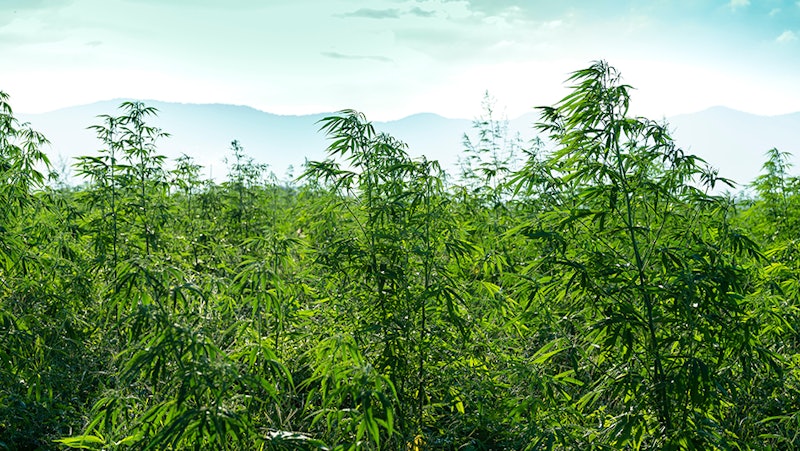When a hemp plant crosses the 0.3% THC threshold, it magically turns into cannabis, according to U.S. regulations. Despite nearly 80 years of precedence, one senator is hoping to change that THC limit by more than tripling it.
Sen. Rand Paul, R-Ky., introduced the Hemp Economic Mobilization Plan (HEMP) Act this week to relieve “unnecessary constraints” on the federally legal hemp industry as well as create transparency and certainty by defining a margin of error in hemp testing.
The HEMP Act, a five-page bill, would amend the Agricultural Marketing Act of 1946 to redefine hemp from 0.3% THC to 1% THC on a dry-weight basis. The HEMP Act would also provide a 0.075% delta-9 THC cushion for post-decarboxylation testing measurement uncertainties, notably to product industrial hemp transporters during shipments.
Many hemp industry advocates in favor of increasing the current 0.3% THC limit argue that the cutoff is arbitrary and lacks scientific backing (i.e., there’s no data to suggest smoking flower that tests at 0.4% THC is intoxicating compared to the nonintoxicating 0.3% THC limit).
While the 0.3% THC limit may be arbitrary, its origin is not, Joy Beckerman, principal of Hemp Ace International, told Cannabis Business Times back in 2021. Hemp Ace International provides consulting, legal support and expert services.
Although hemp’s 0.3% THC limit dates back to the Agricultural Marketing Act of 1946, Beckerman said the genesis of current policy decisions is from 1976, when Canadian horticulturalists Ernest Small and Arthur Cronquist published an article in the journal Taxon entitled “A Practical and Natural Taxonomy for Cannabis.”
In the article, Small and Cronquist wrote, “It will be noted that we arbitrarily adopt a concentration of 0.3% delta-9 THC (dry-weight basis) in young, vigorous leaves of relatively mature plants as a guide to discriminating two classes of plants.”
For nearly five decades, lawmakers, public policy institutes and the Congressional Research Service have often referenced that article while influencing the law of the land.
In 2024, Paul intends to deviate from the status quo with the HEMP Act.
The libertarian-leaning senator’s legislation also aims to require testing for products containing hemp-derived cannabinoids, rather than just testing the hemp flower or plant itself.
Under current regulations, the U.S. Department of Agriculture (USDA) requires hemp to be lab tested within a 30-day window before harvest time to determine whether it meets the 0.3% delta-9 THC threshold defined in the 2018 Farm Bill. This pre-harvest testing standard, in part, has led to the proliferation of intoxicating hemp-derived cannabinoid edible and beverage products.
Today, the U.S. hemp-derived cannabinoid market is “conservatively” estimated to be $28.4 billion—including nonintoxicating CBD products—according to Whitney Economics’ 2023 National Cannabinoid Report.
Paul’s legislation—focused on industrial hemp as an agricultural commodity—also intends to prevent federally legal hemp from being seized by government agencies during transport by requiring one of two documents with shipments:
A copy of a certificate from a laboratory demonstrating that the hemp contains a delta-9 THC concentration of not more than 1% on a dry-weight basis.
“For years, I’ve led the fight in Washington to restore one of Kentucky’s most historically vital crops by legalizing industrial hemp,” Paul said in a Sept. 26 press release announcing the legislation. “We achieved a hard-won victory, but there is still work to do to prevent the federal government from weighing down our farmers with unnecessary bureaucratic micromanaging. My legislation will help this growing industry reach its full economic potential and bring transparency to government regulations.”
Paul’s legislation comes as the overall value of industrial hemp in the U.S. totaled $291 million in 2023, up slightly from the previous year, but down 65% from the $824 million in 2021, according to the most recent National Hemp Report from the USDA.
Also, a total of 21,079 acres harvested in 2023 was down 37% from the 33,480 acres harvested in 2021, according to the USDA.
Specifically in Kentucky, farmers harvested 1,210 acres of industrial hemp in 2023, a 19% decrease from the 1,500 acres harvested in 2021, according to the USDA.
The HEMP Act “ensures Kentucky can rebuild its hemp industry and push forward to a prosperous future,” according to Paul’s press release.
You’re Invited!
H/T: www.cannabisbusinesstimes.com



